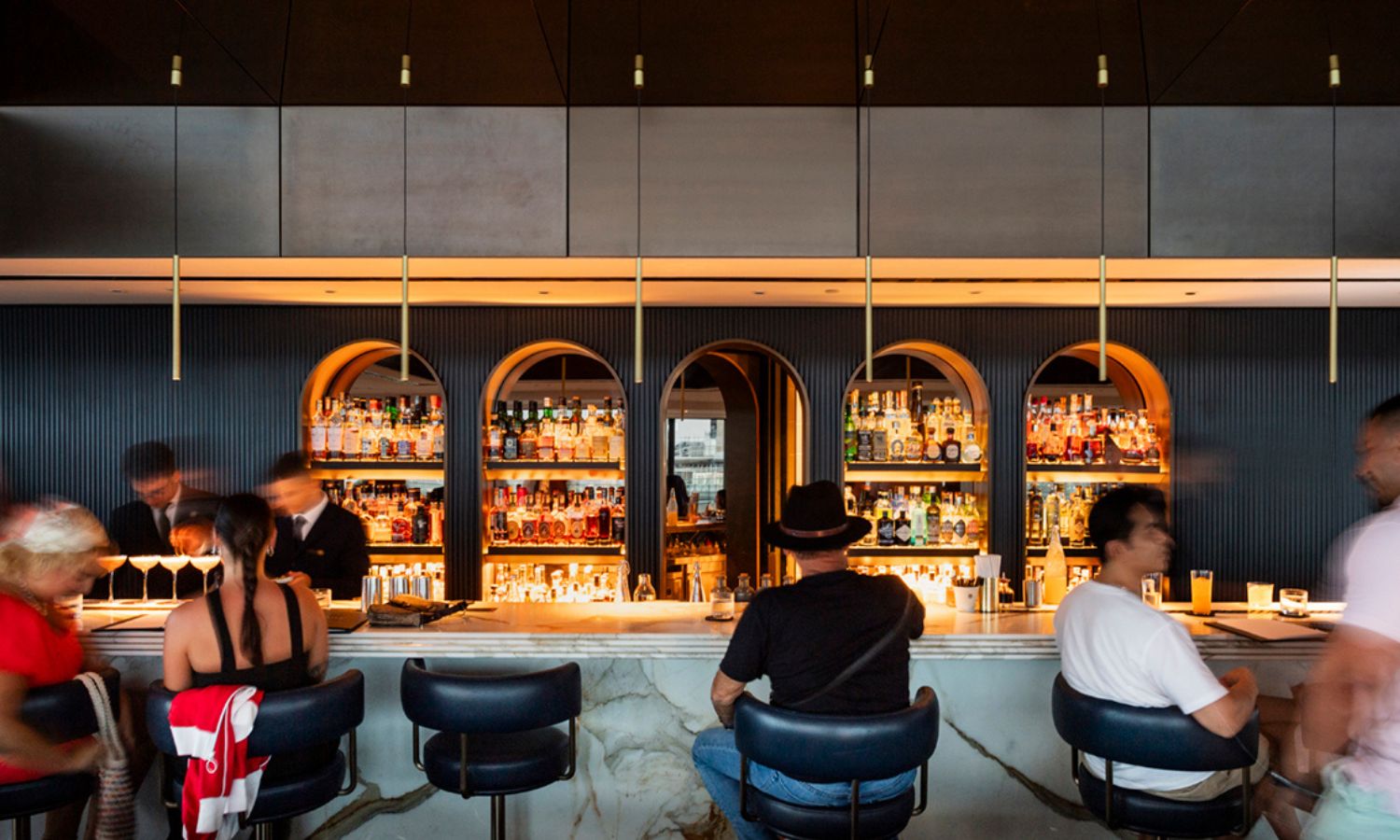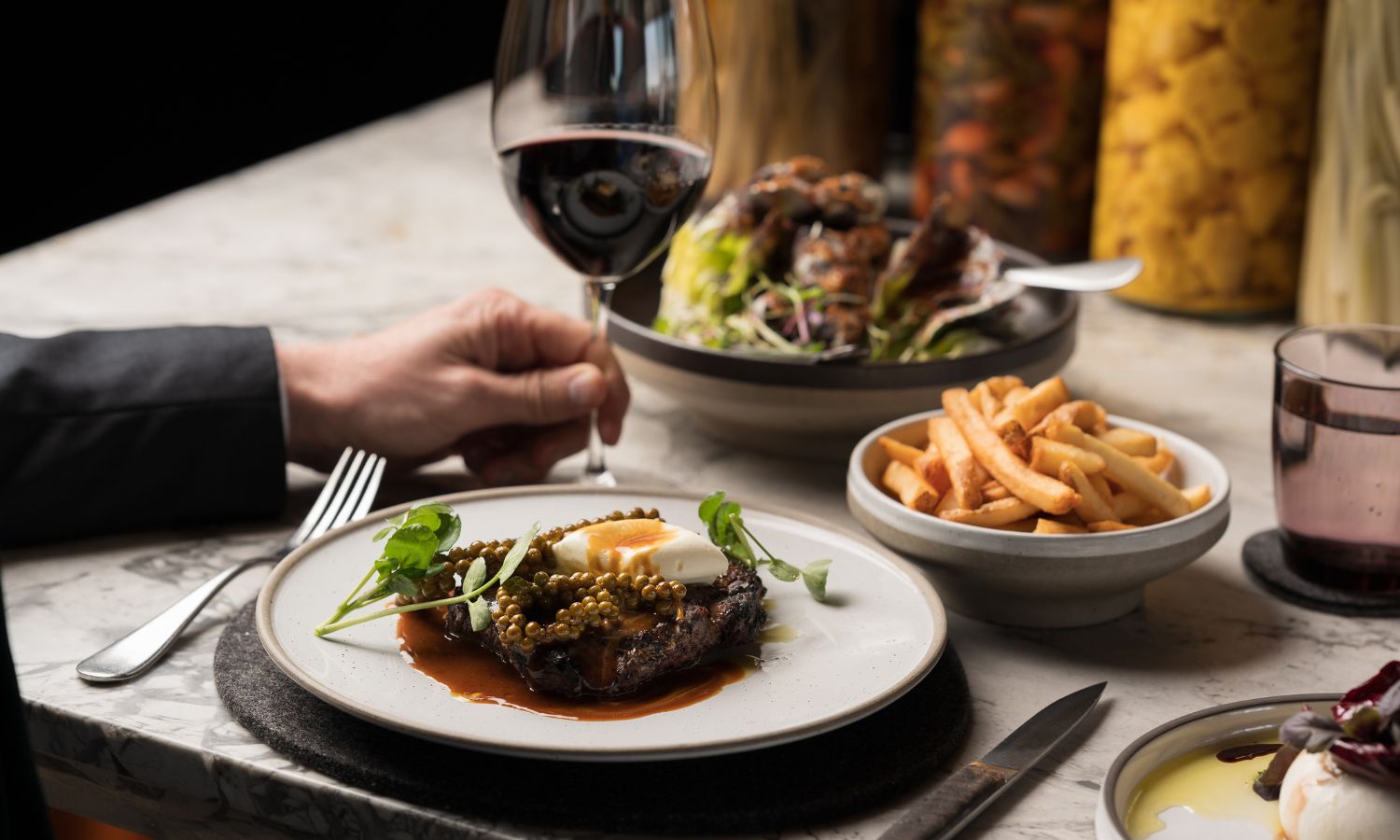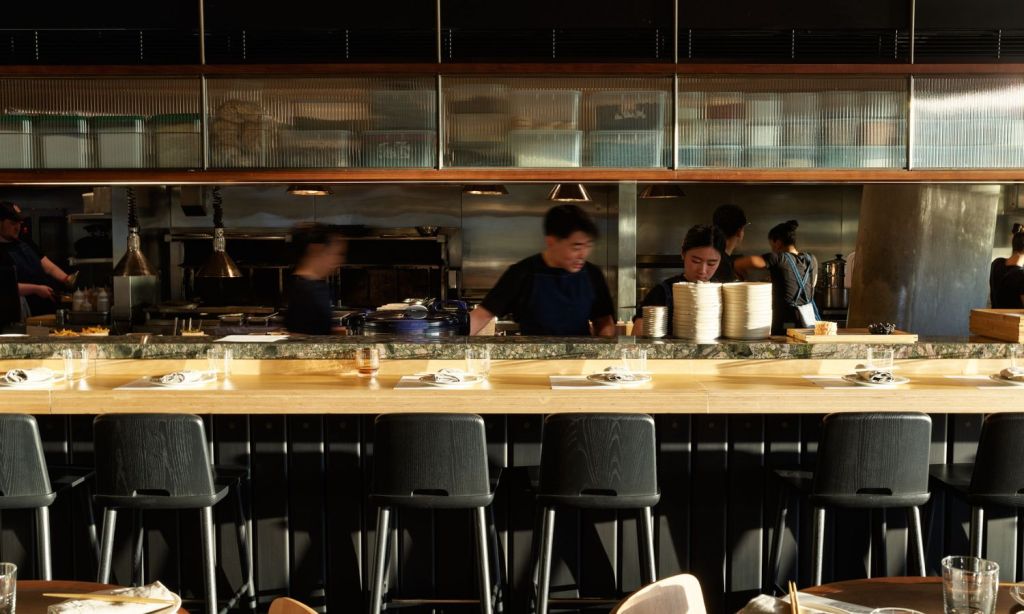Recently, I managed to snag a booking at Firedoor, one of Sydney’s hardest-to-get-into restaurants. It wasn’t just any seat — it was one I felt was among the restaurant’s most special. It was at a counter, overlooking the kitchen, which famously doesn’t use any electricity, instead cooking all the food on an open fire.
I sat mesmerised by the flames. The chefs meticulously plating each dish with tweezers (is that the word for when they’re used in a kitchen?). The slicing of chunks of meat. The counter seat only works if you’re dining alone or, in my case, with one other. But, as I left the restaurant that night, I felt grateful to have had one of the best seats in the house.
I’m not alone in thinking counter seats are great or noticing I’m seeing more of them. Last month, US publication Food & Wine published an article titled ‘Why Counter Service Restaurants Are Everywhere These Days’. This month, Bennelong announced counter dining with side-by-side bar stools at the centre of the venue, called The Counter. Rekodo, Jacksons on George and Woodcut offer counter dining too.

“Dining up at the kitchen is always popular at Rekodo as it creates a wonderful engagement between the guest and kitchen,” says manager Shane Mulligan. “It lets the chef showcase their talent and personality. It’s an exciting experience for the diner to be front row, watching a chef putting their heart and soul into a meal.”
Counter dining is nothing new – it’s been around for decades. It’s mostly been popular in casual settings or at fine-dining restaurants with a chef’s table. Steven Sinclair, head chef at Jacksons on George, attributes it going mainstream now to the fact it blends convenience and community which resonate with many diners today.
“Personally, I like counter dining,” Sinclair says. “I was always fascinated by watching chefs cook in the kitchen even at a young age. Counter dining encourages interaction with chefs or fellow diners. It creates a communal vibe that many people enjoy.”
Ross Lusted, chef and owner of Woodcut, also mentions the curiosity factor. He says he’s noticed guests are extremely interested in the experience of preparing a meal and love being able to ask the chefs about a dish. Counter dining lets them witness the collaboration required by chefs to produce each dish and the magic of service firsthand.
“Sunny [partner and venue co-owner] and I have always loved sitting at the counter,” says Lusted. “Watching the chefs at work can also inspire guests to order dishes they may not have thought to order. This often happens to me.”
So if counter dining has been around for decades, why now is it going mainstream? Pheobe Nannetti, Intercontinental Sydney’s food and beverage director, says over the last few years, the dining scene has increasingly embraced interactive and experimental concepts. Customers are seeking experiences that go beyond just food and drink.

“Diners now look for something more immersive, such as the chance to observe kitchen operations or participate in unique dining concepts. The chef’s expertise and storytelling add a special layer to the experience.”
Counter dining isn’t for everyone, of course. As I mentioned, it doesn’t work if you’re dining with more than one other. Some also feel more comfortable sitting in a chair instead of the usual counter seating option: a stool.
Also some parties of two like to face each other rather than sit side-by-side, particularly if they want to talk uninterrupted. “Hospitality is so organic and if people wish to converse without interjection from staff, so be it,” says Mulligan.
Nannetti adds that dining out is often an opportunity to interact where the food and drink are an accessory to the social aspect. While the meal enhances the experience, it isn’t necessarily the central focus — it merely provides a backdrop.
As counter dining spreads across venues, so too will the chef presentations. Mulligan says his team is already working on more energetic and stylish ways to showcase the preparation of each meal. They’re looking at incorporating hibachi grills and blow torches.
“Many restaurants might offer a more interactive experience where diners can customise their meals directly at the counter,” says Sinclair. “Restaurants could also blend counter dining with other styles, like pop-up experiences or themed events, attracting diverse crowds and offering unique culinary adventures.”
“They might also emphasise transparency in sourcing, showcasing local ingredients and using sustainable practices,” Sinclair says.
Related: Is Telling a Sommelier Your Price Range a Big No-No?
Related: You Could Soon Find More Than Olives and Onions in Your Cocktails
Read more stories from The Latch and subscribe to our email newsletter.







